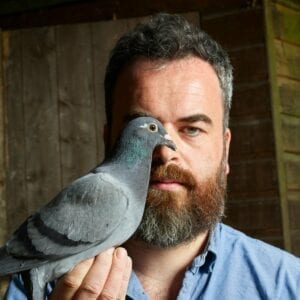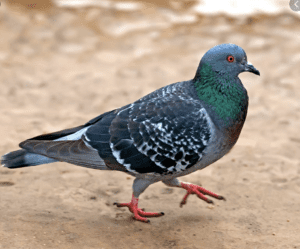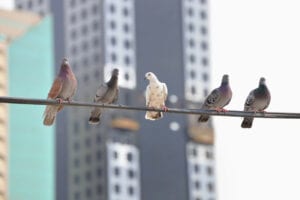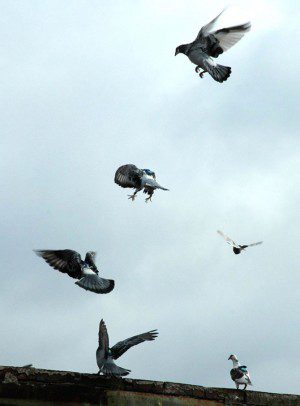
by Pigeon Patrol | Sep 28, 2021 | Pigeon Spikes, Pigeons, Pigeons in the News, Raccoons, Sparrows, UltraSonic Bird Control
A pilot study to see if feeding pigeons birth control can lower their numbers at Vancouver’s SkyTrain stations has expanded to include eight stations in the region.
The program works by installing a feeder and a camera on TransLink property at stations where there’s a pigeon problem. The feed contains OvoControl, a product that interferes with birds’ eggs’ ability to hatch.
As the birds who call the stations home die of natural causes, researchers and TransLink staff hope there won’t be as many young birds to take their place, and pigeon numbers will decrease over time.
“We think TransLink can be a real leader in humane wildlife control,” Sara Dubois, the BC SPCA’s chief scientific officer, told Daily Hive in a phone interview.
“We’re trying to manage them in a way that’s safe for them and for trains.”
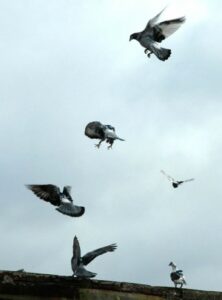
Dubois and the UBC graduate students she’s working with installed the first feeder in January 2019.
Now, the program has been expanded to include eight stations for the study. Four stations feed birds OvoControl, and the other four contain regular food. Over time, the researchers will see whether the birth control significantly reduces pigeon flocks at stations.
It’s still possible for new birds to travel to the stations, Dubois said. But if they stay and eat the birth control consistently, their reproductive abilities will soon be curbed as well.
Pigeons have long caused problems for the transit authority, because their presence on tracks can stop trains and delay customers. Staff also have to spend time cleaning up their excrement from platforms.
Dubois recounted one incident where a pigeon nest caught on fire and service on the Expo Line had to be stopped for several hours.
Previously, TransLink has installed spikes and netting to keep pigeons out, but those methods haven’t been effective. Dubois doesn’t want to see the birds killed, and sees using birth control as an effective way to keep pigeons safe and trains moving.
TransLink and the BC SPCA aren’t revealing which stations have the birth control feeders so that the equipment doesn’t get vandalized. Dubois said that earlier this year they already had one camera and feeder go missing.
If the birth control proves effective, Dubois says it could be a relatively cheap way to reduce the number of birds causing SkyTrain problems.
“It’s really inexpensive compared to the cost of maintenance, cleaning, and trains being down,” she said.
Source
Pigeon Patrol Products & Services is the leading manufacturer and distributor of bird deterrent (control) products in Canada. Pigeon Patrol products have solved pest bird problems in industrial, commercial, and residential settings since 2000, by using safe and humane bird deterrents with only bird and animal friendly solutions. At Pigeon Patrol, we manufacture and offer a variety of bird deterrents, ranging from Ultra-flex Bird Spikes with UV protection, Bird Netting, 4-S Bird Gel and the best Ultrasonic and audible sound devices on the market today.
Voted Best Canadian wholesaler for Bird Deterrent products ten years in a row.
Contact us at 1- 877– 4– NO-BIRD, (604) 585-9279 or visit our website at www.pigeonpatrol.ca
Pigeon/Pigeon Patrol / Pigeons Roosting / Vancouver Pigeon Control /Bird Spikes / Bird Control / Bird Deterrent / Pigeon Deterrent? Surrey Pigeon Control / Pest /Seagull deterrent / Vancouver Pigeon Blog / Birds Inside Home / Pigeons in the cities / Ice Pigeons/ What to do about pigeons/ sparrows , Damage by Sparrows, How To Keep Raccoons Away, Why Are Raccoons Considered Pests/ De-fence / Pigeon Nesting/ Bird Droppings / Pigeon Dropping/ woodpecker control/ Professional Bird Control Company/ Keep The Birds Away/ Birds/rats/ seagull/pigeon/woodpecker/ dove/sparrow/pidgeon control/pidgeon problem/ pidgeon control/flying rats/ pigeon Problems/ bird netting/bird gel/bird spray/bird nails/ bird guard
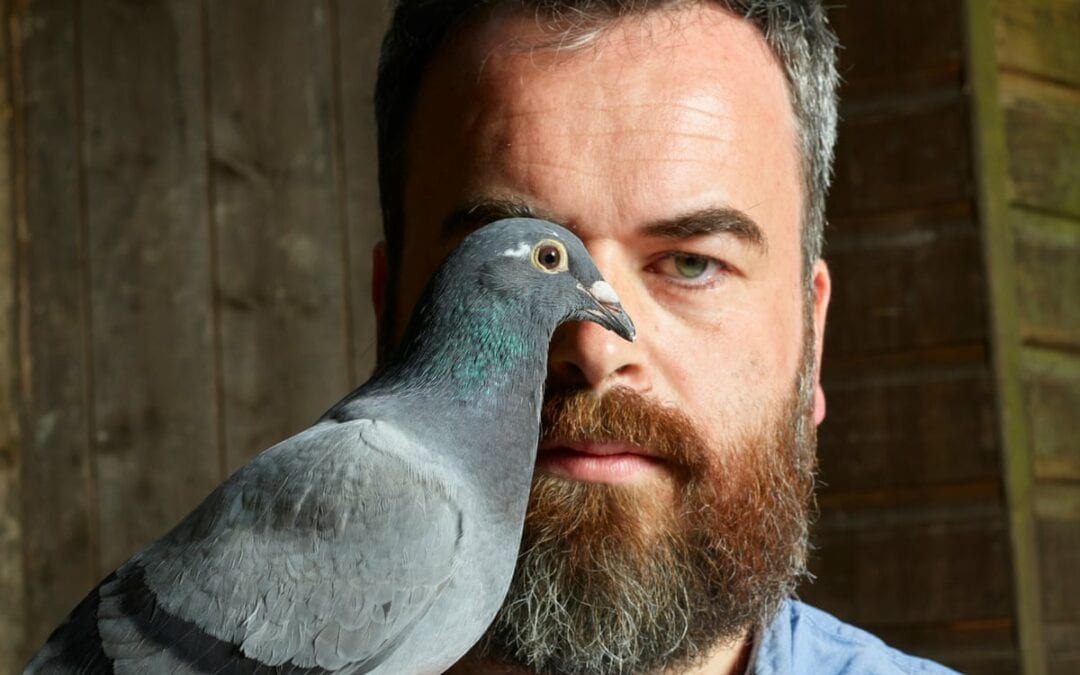
by Pigeon Patrol | Sep 14, 2021 | Pigeon Spikes, Pigeons, Pigeons in the News, Raccoons, Sparrows, UltraSonic Bird Control
New research has shown that feral, untrained pigeons can recognise individual people and are not fooled by a change of clothes.
Researchers, who will be presenting their work at the Society for Experimental Biology Annual Conference in Glasgow on Sunday the 3rd of July, have shown that urban pigeons that have never been caught or handled can recognise individuals, probably by using facial characteristics.
Although pigeons have shown remarkable feats of perception when given training in the lab this is the first research showing similar abilities in untrained feral pigeons.
In a park in Paris city centre, pigeons were fed by two researchers, of similar build and skin colour, wearing different coloured lab coats. One individual simply ignored the pigeons, allowing them to feed while the other was hostile, and chased them away. This was followed by a second session when neither chased away the pigeons.
The experiment, which was repeated several times, showed that pigeons were able to recognise the individuals and continued to avoid the researcher who had chased them away even when they no longer did so. Swapping lab coats during the experiments did not confuse the pigeons and they continued shun the researcher who had been initially hostile.
“It is very likely that the pigeons recognised the researchers by their faces, since the individuals were both female and of a similar age, build and skin colour,” says Dr. Dalila Bovet a co-author of this work from the University of Paris Ouest Nanterre La Défense. “Interestingly, the pigeons, without training, spontaneously used the most relevant characteristics of the individuals (probably facial traits), instead of the lab coats that covered 90% of the body.”
The fact that the pigeons appeared to know that clothing colour was not a good way of telling humans apart suggests that the birds have developed abilities to discriminate between humans in particular. This specialised ability may have come about over the long period of association with humans, from early domestication to many years of living in cities.
Future work will focus on identifying whether pigeons learn that humans often change clothes and so use more stable characteristics for recognition, or if there is a genetic basis for this ability, linked to domestication or to having evolved in an urban environment.
Source
Pigeon Patrol Products & Services is the leading manufacturer and distributor of bird deterrent (control) products in Canada. Pigeon Patrol products have solved pest bird problems in industrial, commercial, and residential settings since 2000, by using safe and humane bird deterrents with only bird and animal friendly solutions. At Pigeon Patrol, we manufacture and offer a variety of bird deterrents, ranging from Ultra-flex Bird Spikes with UV protection, Bird Netting, 4-S Bird Gel and the best Ultrasonic and audible sound devices on the market today.
Voted Best Canadian wholesaler for Bird Deterrent products ten years in a row.
Contact us at 1- 877– 4– NO-BIRD, (604) 585-9279 or visit our website at www.pigeonpatrol.ca
Pigeon/Pigeon Patrol / Pigeons Roosting / Vancouver Pigeon Control /Bird Spikes / Bird Control / Bird Deterrent / Pigeon Deterrent? Surrey Pigeon Control / Pest /Seagull deterrent / Vancouver Pigeon Blog / Birds Inside Home / Pigeons in the cities / Ice Pigeons/ What to do about pigeons/ sparrows , Damage by Sparrows, How To Keep Raccoons Away, Why Are Raccoons Considered Pests/ De-fence / Pigeon Nesting/ Bird Droppings / Pigeon Dropping/ woodpecker control/ Professional Bird Control Company/ Keep The Birds Away/ Birds/rats/ seagull/pigeon/woodpecker/ dove/sparrow/pidgeon control/pidgeon problem/ pidgeon control/flying rats/ pigeon Problems/ bird netting/bird gel/bird spray/bird nails/ bird guard
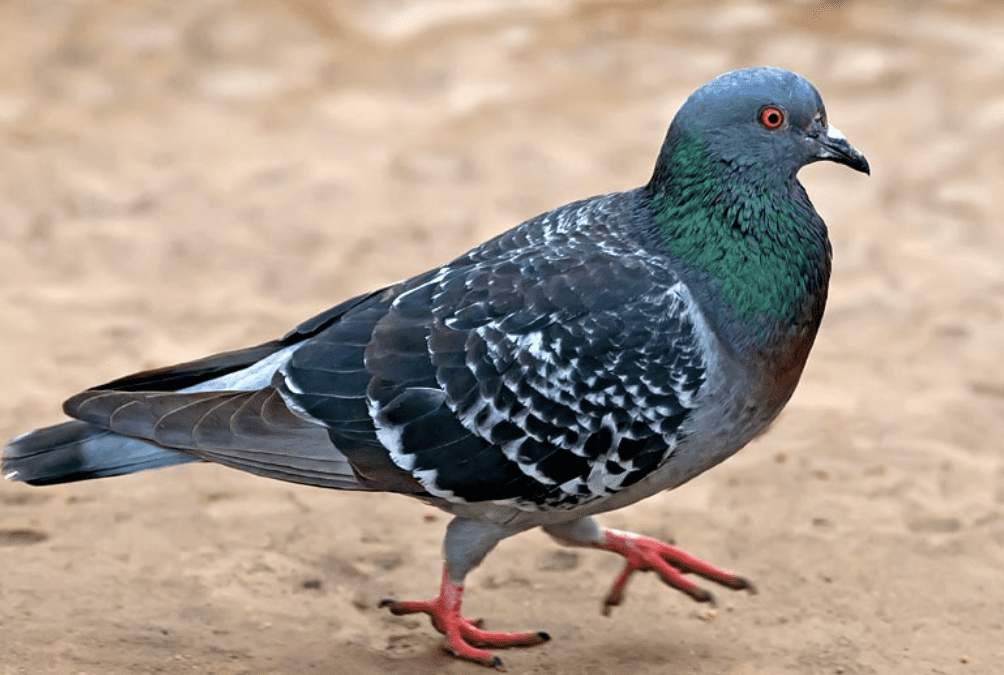
by Pigeon Patrol | Sep 14, 2021 | Pigeon Patrol's Services, Pigeon Predators, Pigeon Spikes, Pigeons, Pigeons in the News, Raccoons, Sparrows, UltraSonic Bird Control
In a rather surprising turn of events, it appears pigeons use their body to make sharp turns, rather than stronger wing strokes when flying. This bit of news comes from Ivo Ros of Harvard University and his colleagues who have been studying the bird’s flight skills with high speed cameras. They have published their results in the Proceedings of the National Academy of Sciences.
Intuitively, it might seem, at least to humans who have no natural wings of course, that to turn, especially when sharp angles are involved, that flailing the wing harder or faster that is opposite the turn would be the most natural way to proceed. After all, that’s the approach us humans would use in water for instance, in trying to turn quickly. But that’s not how birds operate, at least not pigeons. Ros and his team set up nine high-speed synchronized cameras in a hall that had a ninety degree turn in the middle of it. They then marked a pigeon in sixteen places to track just exactly how each body part moved as it flew. They then set the bird to flying the hallway, capturing every detail and noting precisely what goes on with its body, wings, and tail as it turns. Surprisingly, it turned out that the pigeon neither flapped faster or harder, opting instead to simply turn or roll its body to adjust for the turn and allowing its wings to flap as they would were the bird heading straight. Once through the turn, the bird then readjusted its body to enable straight ahead flight.
While all this may not seem all that remarkable, after all, the pigeons have likely been turning in flight for more years than we have held interest in how they do so, the observations may provide important information for people wishing to improve on clunky old human flight, or more specifically, when trying to build drones that can fly better than what is available today.
It’s not hard to imagine the difference. Sending a drone down a narrow hall where it must negotiate a ninety degree turn is quite frankly, impossible at this point, though a helicopter, which perhaps not coincidently turns in ways very similar to the pigeon, could do it with ease. This is because it can slow down without losing lift. But if the drone could be made to maneuver its body as it turns, perhaps then it could perform maneuvers that the common pigeon takes for granted.
Source
Pigeon Patrol Products & Services is the leading manufacturer and distributor of bird deterrent (control) products in Canada. Pigeon Patrol products have solved pest bird problems in industrial, commercial, and residential settings since 2000, by using safe and humane bird deterrents with only bird and animal friendly solutions. At Pigeon Patrol, we manufacture and offer a variety of bird deterrents, ranging from Ultra-flex Bird Spikes with UV protection, Bird Netting, 4-S Bird Gel and the best Ultrasonic and audible sound devices on the market today.
Voted Best Canadian wholesaler for Bird Deterrent products ten years in a row.
Contact us at 1- 877– 4– NO-BIRD, (604) 585-9279 or visit our website at www.pigeonpatrol.ca
Pigeon/Pigeon Patrol / Pigeons Roosting / Vancouver Pigeon Control /Bird Spikes / Bird Control / Bird Deterrent / Pigeon Deterrent? Surrey Pigeon Control / Pest /Seagull deterrent / Vancouver Pigeon Blog / Birds Inside Home / Pigeons in the cities / Ice Pigeons/ What to do about pigeons/ sparrows , Damage by Sparrows, How To Keep Raccoons Away, Why Are Raccoons Considered Pests/ De-fence / Pigeon Nesting/ Bird Droppings / Pigeon Dropping/ woodpecker control/ Professional Bird Control Company/ Keep The Birds Away/ Birds/rats/ seagull/pigeon/woodpecker/ dove/sparrow/pidgeon control/pidgeon problem/ pidgeon control/flying rats/ pigeon Problems/ bird netting/bird gel/bird spray/bird nails/ bird guard

by Pigeon Patrol | Aug 31, 2021 | Pigeon Spikes, Pigeons, Pigeons in the News, Raccoons, Sparrows, UltraSonic Bird Control
Even the bird-brained can follow a leader. When pigeons fly in flocks, each bird falls behind another with better navigational skill, and the savviest among them leads the flock, scientists report in the April 8 Nature.
The research suggests hierarchies can serve peaceful purposes in the animal kingdom, where dominance by brute force is often the rule. “A pecking order tends to be just that — a pecking order,” says Iain Couzin of Princeton University, an expert in collective behavior who was not involved in the research.
The research also suggests that for pigeons, dominance isn’t set in stone. While one bird often emerged as the leader, other birds also stepped up. This flexibility in leadership had previously been seen only in some small groups of fish.
From schools to packs to swarms to flocks, collective behavior is widespread among animals. But in many cases, the important interactions are with nearest neighbors, and control of the group’s movement is distributed among members rather than hierarchical.

Biological physicist Tamás Vicsek of Eötvös Loránd University in Budapest and his colleagues studied flight dynamics in homing pigeons, which fly in flocks but conveniently return to their roosts. The researchers outfitted 13 pigeons with tiny backpacks carrying GPS devices that measured shifts in birds’ flight direction five times per second. Flocks of eight to 10 birds flew with the devices during homing flights (a roughly 14-kilometer trip back to the roost) and spontaneous “free” flights near home. Each bird also flew solo flights of about 15 kilometers each.
Analysis of GPS logs showed that for each excursion, the flock had one leader followed by at least three or four other birds. Each of these followers was in turn followed by other birds in the flock. Comparing the solo flight paths to the group flights showed that the birds with the best navigational skills led the flock.
While flocks have hierarchies, they’re not dictatorships, notes Vicsek. One bird led eight of the 13 flights, while other birds took the lead on the rest of the trips. Vicsek likens the dynamics to a group of peers deciding where to eat dinner. “Maybe someone knows the area restaurants best, or there is a person who’s a gourmand — or maybe they are the most outspoken,” he says. This one person might pick the place to eat for several nights, although another person might chime in now and then. And then there is the person with no say, whom everyone knows has terrible taste in food.
“These pigeons know each other. They know which is the smartest. The fastest bird will even follow the slower one who knows the way home the best,” say Vicsek. Videos of the birds’ positions during flight showed that if the best navigator moves a little to the left, it takes about a third of a second for other birds to do the same. But if the least savvy bird makes a move “the others don’t care,” Vicsek says.
Pigeons’ brains may be wired for follow-the-leader, comments behavioral neuroscientist Lucia Jacobs of the University of California, Berkeley. When the left eye sees something, for example, it sends all the visual information to the right brain hemisphere, and vice versa. This “extreme lateralization” may play a role in organizing flocks, the new work suggests. A pigeon following another was most likely to be flying on its partner’s right, seeing this leader with its left eye. “It’s very cool,” Jacobs says.
Source
Pigeon Patrol Products & Services is the leading manufacturer and distributor of bird deterrent (control) products in Canada. Pigeon Patrol products have solved pest bird problems in industrial, commercial, and residential settings since 2000, by using safe and humane bird deterrents with only bird and animal friendly solutions. At Pigeon Patrol, we manufacture and offer a variety of bird deterrents, ranging from Ultra-flex Bird Spikes with UV protection, Bird Netting, 4-S Bird Gel and the best Ultrasonic and audible sound devices on the market today.
Voted Best Canadian wholesaler for Bird Deterrent products ten years in a row.
Contact us at 1- 877– 4– NO-BIRD, (604) 585-9279 or visit our website at www.pigeonpatrol.ca
Pigeon/Pigeon Patrol / Pigeons Roosting / Vancouver Pigeon Control /Bird Spikes / Bird Control / Bird Deterrent / Pigeon Deterrent? Surrey Pigeon Control / Pest /Seagull deterrent / Vancouver Pigeon Blog / Birds Inside Home / Pigeons in the cities / Ice Pigeons/ What to do about pigeons/ sparrows , Damage by Sparrows, How To Keep Raccoons Away, Why Are Raccoons Considered Pests/ De-fence / Pigeon Nesting/ Bird Droppings / Pigeon Dropping/ woodpecker control/ Professional Bird Control Company/ Keep The Birds Away/ Birds/rats/ seagull/pigeon/woodpecker/ dove/sparrow/pidgeon control/pidgeon problem/ pidgeon control/flying rats/ pigeon Problems/ bird netting/bird gel/bird spray/bird nails/ bird guard
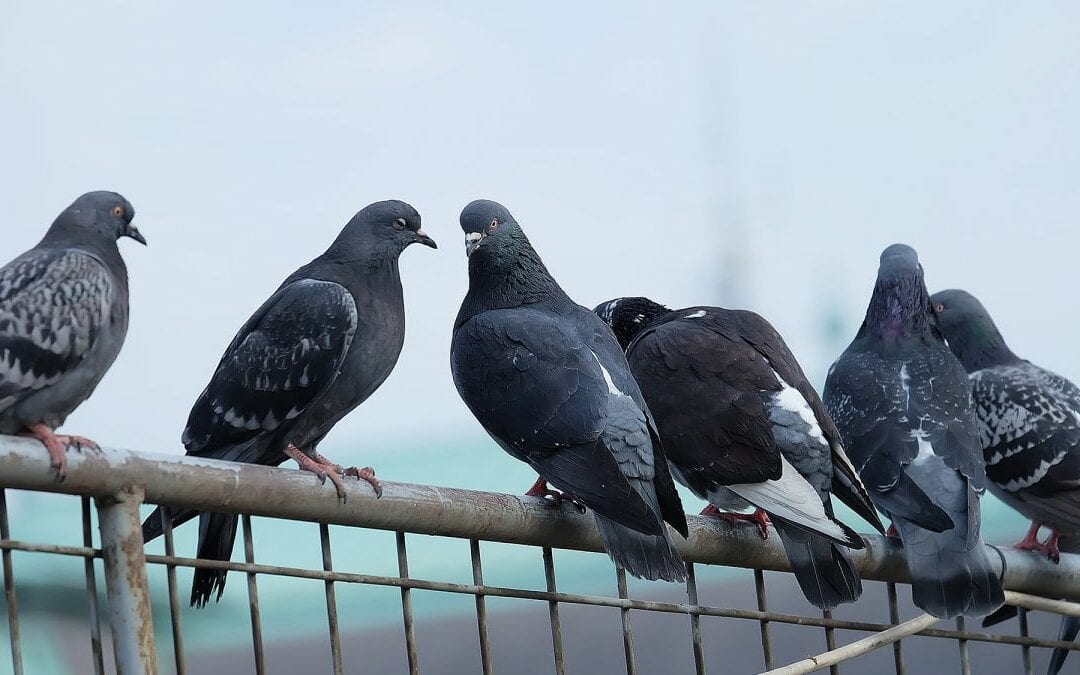
by Pigeon Patrol | Aug 26, 2021 | Pigeons, Pigeons in the News, Raccoons, Sparrows, UltraSonic Bird Control
Scientists have thought for a decade that iron-bearing structures in the homing pigeon’s beak help the bird find its location by “reading” Earth’s magnetic field. Now, it turns out that this iron occupies cells that battle infection, rather than nerve cells.
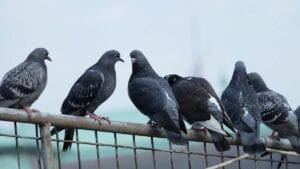
The new results leave a chasm in our understanding of bird navigation, says Charles Walcott, an expert on the subject at Cornell University, who was not involved in the study. “It’s astonishing that we have what seems like a terribly simple-minded problem. Take a homing pigeon any direction, and after circling a couple of times, it heads for home … and we don’t understand how these animals do this?”
Study leader David Keays, of the Institute for Molecular Pathology in Vienna, did not set out to debunk a beautiful theory, but rather to explore the nerve cells in the beak that supposedly register magnetism. “My background is in molecular biology and genetics, and I thought there must be some incredible biology involved. I wanted to get a handle on the molecules and create an artificial receptor.”
Because the “magnetic neurons” in the beak contained iron, Keays applied a blue stain that gloms onto iron. Christoph Treiber and Marion Salzer generated one-quarter million slices for microscope slides, each one-hundredth of a millimeter thick.
(Makes us dizzy … Didn’t they outlaw slavery?)
Iron in cells in the pigeon’s beak are stained blue; cell nuclei are pink. These cells, previously thought to be nerve cells, are actually macrophages, a type of immune cell.
A fly in the ointment!
Although the magnetic neurons were said to number just six, iron-rich cells showed up all over the beak. One beak had about 108,000 blue-stained cells while another had just 200, Keays says. “This did not make sense. If these were magnetoreceptors, we would expect a similar number in birds of the same age and sex.”
When the scientists treated the samples with stains that attach to neurons, there was almost no overlap with the iron-bearing areas.
As questions accumulated, the researchers got a lucky break. One bird’s infected beak attracted blue cells that resembled macrophages, immune cells that fight infection (and also process iron). “You could see the cells’ tentacles engulfing other cells,” Keays says.
Stains that attach to immune cells overlapped heavily with the iron stain, Keays says; further evidence that the iron was inside macrophages, not neurons.
The study is “quite interesting and convincing,” says Walcott, and it explains why scientists have found no connection between the iron crystals and the nervous system. “If this is going to be seen as a sense organ, I think the two ought to be connected.”
Paradigm paranoia
Although the new study overthrows the accepted explanation for the pigeon’s magnetic mastery, Walcott says magnetism isn’t the whole story in navigation; birds also use vision, memory and smell.
Looking at the sun can help the bird figure out direction, but magnetic methods are needed to find a location on the globe.
The amazing homing ability of the homing pigeon found use in World War I, when the British Army drafted a London bus as a pigeon loft. Pigeons carried messages from the front to the loft in the rear.
Confusingly, birds seem to have a mechanism in the eye that detects Earth’s magnetic field. But because this works only when the sun is shining, it’s unlikely to explain nighttime navigation.
Keays says attitudes have changed since he “released a cat among the pigeons” at a conference a year ago. “Half of the audience wanted to hug me, they had been very skeptical, but the other half wanted to kill me.”
Since then, however, “We were able to persuade some big players in the field that the original reports were wrong. I think the great thing about science is that it is a self-correcting enterprise. If we get it wrong, somebody is going to come along and work out what the truth is.”
At this point, though, mystery rules. “It’s absolutely clear that birds, pigeons, can detect magnetic fields,” Keays says, “but the way they do that is the mystery.”
Source
Pigeon Patrol Products & Services is the leading manufacturer and distributor of bird deterrent (control) products in Canada. Pigeon Patrol products have solved pest bird problems in industrial, commercial, and residential settings since 2000, by using safe and humane bird deterrents with only bird and animal friendly solutions. At Pigeon Patrol, we manufacture and offer a variety of bird deterrents, ranging from Ultra-flex Bird Spikes with UV protection, Bird Netting, 4-S Bird Gel and the best Ultrasonic and audible sound devices on the market today.
Voted Best Canadian wholesaler for Bird Deterrent products ten years in a row.
Contact us at 1- 877– 4– NO-BIRD, (604) 585-9279 or visit our website at www.pigeonpatrol.ca
Pigeon/Pigeon Patrol / Pigeons Roosting / Vancouver Pigeon Control /Bird Spikes / Bird Control / Bird Deterrent / Pigeon Deterrent? Surrey Pigeon Control / Pest /Seagull deterrent / Vancouver Pigeon Blog / Birds Inside Home / Pigeons in the cities / Ice Pigeons/ What to do about pigeons/ sparrows , Damage by Sparrows, How To Keep Raccoons Away, Why Are Raccoons Considered Pests/ De-fence / Pigeon Nesting/ Bird Droppings / Pigeon Dropping/ woodpecker control/ Professional Bird Control Company/ Keep The Birds Away/ Birds/rats/ seagull/pigeon/woodpecker/ dove/sparrow/pidgeon control/pidgeon problem/ pidgeon control/flying rats/ pigeon Problems/ bird netting/bird gel/bird spray/bird nails/ bird guard

by Pigeon Patrol | Aug 9, 2021 | Pigeon Spikes, Pigeons, Pigeons in the News, Raccoons, Sparrows, UltraSonic Bird Control
Scientists have discovered the secret of pigeons’ remarkable ability to navigate perfectly over journeys of several hundred miles. They do it by smell.
Research found that pigeons create ‘odour’ maps of their neighbourhoods and use these to orient themselves. This replaces the idea that they exploited subtle variations in the Earth’s magnetic field to navigate.
‘This is important because it is the first time that magnetic sensing and smell have been tested side by side,’ said Anna Gagliardo, of the University of Pisa, who led the research.
The discovery that birds have an olfactory positioning system is the latest surprising discovery about bird migration. Birds know exactly when to binge on berries or insects to fatten themselves for long flights, and some species recognise constellations, which helps them to fly at night. Birds also travel immense distances: the average Manx shearwater travels five million miles during its life.
Research into navigation has included an experiment in which robins were released with a patch over one eye – some on the right eye, some on the left. The left-eye-patched robins navigated well, but those with right-eye patches got hopelessly lost. ‘It is a very strange finding,’ said Graham Appleton, of the British Trust for Ornithology . ‘It is clear the cues robins use to navigate are only detectable in one eye. Why that should be the case, I have no idea.’
In the Pisa experiments, Gagliardo, working with Martin Wild of the University of Auckland , followed up experiments done in 2004, which showed that pigeons could detect magnetic fields. She argued that this did not mean they actually did.
So in 24 young homing pigeons she cut the nerves that carried olfactory signals to their brains. In another 24 pigeons she cut the trigeminal nerve, which is linked to the part of the brain involved in detecting magnetic fields.
The 48 birds were released 30 miles from their loft. All but one of those deprived of their ability to detect magnetic fields were home within 24 hours, indicating that it was not an ability that helped them to navigate. But those who had been deprived of their sense of smell fluttered all over the skies of northern Italy. Only four made it home.
Gagliardo and her team conclude that pigeons read the landscape as a patchwork of odours.
Every spring, hundreds of millions of birds head north in order to exploit new resources. Gulls head to the Arctic to make use of the 24 hours of daylight prevailing there, while swallows and other birds leave Africa to exploit the British summertime.
The navigation involved in these long journeys is still a cause of considerable debate among scientists. Among the main theories are suggestions that some birds remember visual maps of the terrain they fly over; that they follow the lines of Earth’s magnetic field; and that night-time flyers remember star maps of the sky.
However, the discovery of pigeons’ prowess at exploiting smells is considered important because their navigational abilities are some of the most acute in the natural world. Pigeons excel at getting home when released in unfamiliar locations. That they achieve such accuracy using smell is all the more surprising.
Source
Pigeon Patrol Products & Services is the leading manufacturer and distributor of bird deterrent (control) products in Canada. Pigeon Patrol products have solved pest bird problems in industrial, commercial, and residential settings since 2000, by using safe and humane bird deterrents with only bird and animal friendly solutions. At Pigeon Patrol, we manufacture and offer a variety of bird deterrents, ranging from Ultra-flex Bird Spikes with UV protection, Bird Netting, 4-S Bird Gel and the best Ultrasonic and audible sound devices on the market today.
Voted Best Canadian wholesaler for Bird Deterrent products ten years in a row.
Contact us at 1- 877– 4– NO-BIRD, (604) 585-9279 or visit our website at www.pigeonpatrol.ca
Pigeon/Pigeon Patrol / Pigeons Roosting / Vancouver Pigeon Control /Bird Spikes / Bird Control / Bird Deterrent / Pigeon Deterrent? Surrey Pigeon Control / Pest /Seagull deterrent / Vancouver Pigeon Blog / Birds Inside Home / Pigeons in the cities / Ice Pigeons/ What to do about pigeons/ sparrows , Damage by Sparrows, How To Keep Raccoons Away, Why Are Raccoons Considered Pests/ De-fence / Pigeon Nesting/ Bird Droppings / Pigeon Dropping/ woodpecker control/ Professional Bird Control Company/ Keep The Birds Away/ Birds/rats/ seagull/pigeon/woodpecker/ dove/sparrow/pidgeon control/pidgeon problem/ pidgeon control/flying rats/ pigeon Problems/ bird netting/bird gel/bird spray/bird nails/ bird guard




